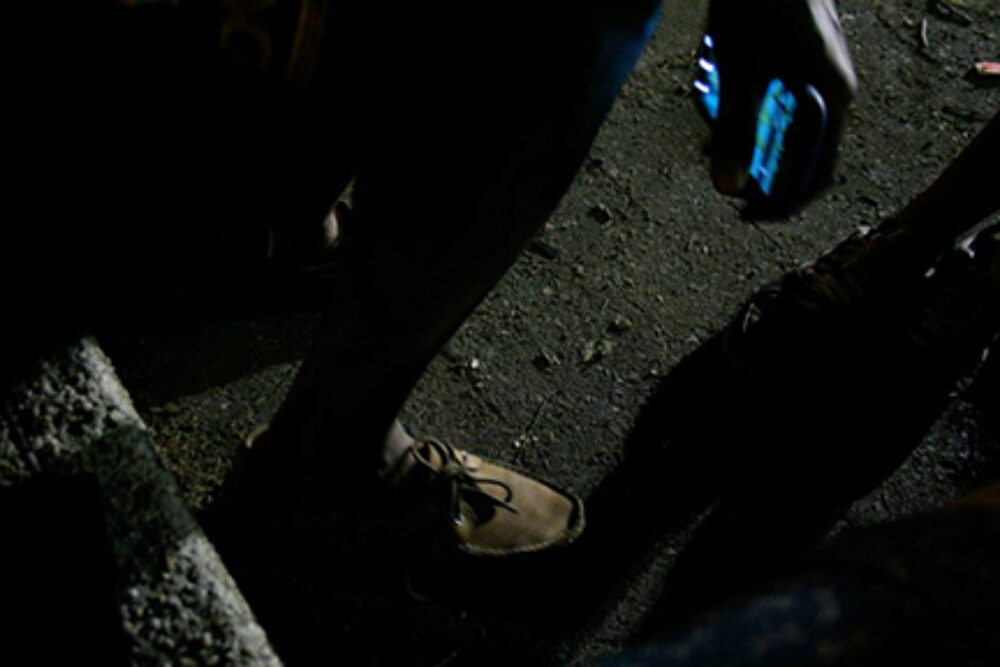Visual AIDS is proud to share an excerpt of Kenyon Farrow's essay, When My Brother Fell, Again, which was commissioned as part of the TIME IS NOT A LINE issue of the WE WHO FEEL DIFFERENTLY journal.
Thirty years after the discovery of the Human Immunodeficiency Virus (HIV) in 1983, we are witnessing unprecedented visibility of LGBT themes in mass media and in popular culture. Not surprisingly, Logo, the LGBT-themed cable network, which launched in 2005 (owned by Viacom, Inc.), recently announced its plan to de-queer the channel. Lisa Sherman, Logo's Executive Vice-President, told the Washington Blade (March 1, 2012): “...Culturally, we’re past the tipping point. For gays and lesbians, it’s part of who they are, but they don’t lead with it, because many are leading fully integrated, mainstream lives... Our goal at Logo has always been to honestly reflect our viewers’ lives. We’re now reinforcing our commitment to them with programming that truly mirrors how many of them are living and want to be entertained today.”
Logo’s decision was made largely because LGBT themes are increasingly part of mainstream shows. According to Logo's market research LGBT people no longer want to be ghettoized in their social spaces, neighborhoods, and in their consumption of culture. But, who can opt out of the ghetto and who can’t?
Many people assume that the HIV epidemic in the U.S. has been contained, which in some respects is an accurate statement, but not in ways that should keep us calm. While the overall number of annual HIV infections has remained fairly stable for the last twenty years, nearly the total share of those infections has been taking place within specific communities. HIV has become ghettoized to primarily circulate amongst poor black gay and bisexual men, black transgender women, poor black women, the homeless, and drug users.
When you think about the manner in which AIDS activism and organizing facilitated a range of policy wins for LGBT people—but in particular for white gay men, a demographic that had a dramatic reduction in mortality and morbidity from AIDS since the introduction of retro viral therapy treatments in the late 1990s—it is interesting to note that many of the organizations that were founded in the 1980s and 90s to counter homophobia, like the Gay and Lesbian Alliance Against Defamation (GLAAD) for example, have entirely abandoned AIDS as an issue to mobilize around. Former ACT-UP NY member and co-founder of Treatment Action Group (TAG) Peter Staley noted as much in a 2013 GLAAD Award acceptance speech noting, “the AIDS activism that led to the breakthrough treatments in 1996 stands as the proudest achievement the gay population of this world can every claim. But let's face it. A lot of us walked away from the fight after the drugs came out. Given the overwhelming fatigue we all felt after 15 years of unrelenting death, wanting to put this behind us was understandable. But the AIDS crisis didn't end.”
A forceful tide of research has been taking place for fifteen years pointing out the racial disparities in new HIV infections, but the response to that tide has been, arguably, inadequate. These rates aren’t shocking to anyone working in the HIV/AIDS field anymore. But when I talk to people who don’t work in the field, for instance, and tell them that young black gay men in Atlanta, Georgia have one of the highest figures for HIV incidence ever recorded in a population in the resource-rich world, there are audible gasps. Despite the fact that HIV treatments are more effective and better than they were even a decade ago, I am still losing HIV-positive friends, some to AIDS itself, and others to suicide and drug overdoses. The latter two are often due to the depression and isolation that an HIV-positive status may bring. Although we often highlight how poverty and social isolation are associated with higher rates of HIV, I often wonder if, for the ten or so Black and Puerto Rican gay friends I’ve lost in the last four years, their roles as leaders in the community actually helped fuel their sense of isolation, depression, and in some cases their need to carry their HIV diagnosis to their early grave. All of them were activists, artists, community organizers. Several ran organizations. All were under the age of forty three. At times like this, I find myself in Essex Hemphill's position: "When my brother fell I picked up his weapons.”
Read the rest of Kenyon Farrow's essay: When My Brother Fell, Again.
We Who Feel Differently Journal is a sporadic online publication that addresses critical issues of queer culture. It features analyses and critiques of international Lesbian, Gay, Bisexual, Trans, Intersex, Queer and Questioning politics from queer perspectives.
